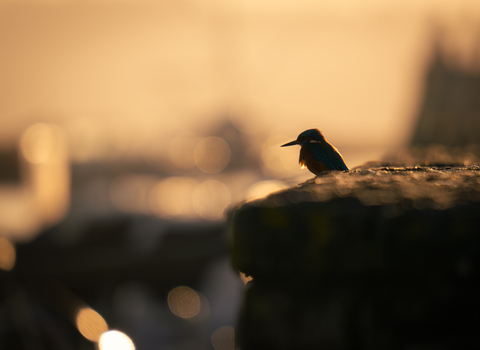The Lymington to Keyhaven coastline, which is of the highest importance for wildlife, is confronted with a number of complex challenges that will be neither easy nor cheap to resolve. Relative sea level rise is a reality and the current sea defence structures will not be fit for purpose going forward. The Hurst spit and the salt marshes off the coast are no longer recharged with silt and shingle from the soft cliffs to the west of Hurst because of the sea defences that now protect Bournemouth, Barton and Milford on Sea. These challenges will not be straightforward to address and the Trust welcomes the Environment Agency’s (EA) aim of trying to develop a long-term, sustainable strategy for this section of coastline.
The Trust has been engaged in the ongoing consultation process and we are considering the details of the EA’s proposals for the sea wall at Lymington. While the sea wall is the responsibility of the EA, the Trust has had an opportunity to input into discussions and our primary focus is on trying to minimise the impact on wildlife and to ensure any decision is underpinned by robust evidence. We also recognise the importance of the sea wall for local people and visitors to walk and enjoy wildlife close up and this will also need to be considered as part of the process.
There are, in effect, two options available, although there are some variations within them. Unfortunately, the options available (summarised below) would both have some negative impacts on habitats and species along that section of coastline.
Maintaining the sea wall in its current position
This would cause coastal squeeze and could exacerbate the speed of erosion of the off-shore salt marshes which support thousands of nesting and overwintering birds. This approach would require raising the height of the wall and, in turn, increasing its width. Increasing the height and width of the sea wall would require a significant take of land with high value for wildlife.
Realigning the sea wall
This would be complicated due to the presence of the historic landfill site, and it would lead to the loss of a significant area of saline lagoons and coastal grazing marshes that support an enormous array of wildlife. It is likely that any realignment would require a new structure that would result in a loss of land and, with it, cause a detrimental impact on local wildlife.
Whatever option is ultimately chosen, the Trust will push for the loss of habitats to be properly mitigated and ensure that whatever form the coastline takes in the future, it continues to support viable populations of coastal bird species. While the issues involved are complex and all options will have some negative impacts on the area, the Trust is committed to continuing to influence the process and to push for the best possible outcomes for wildlife.

